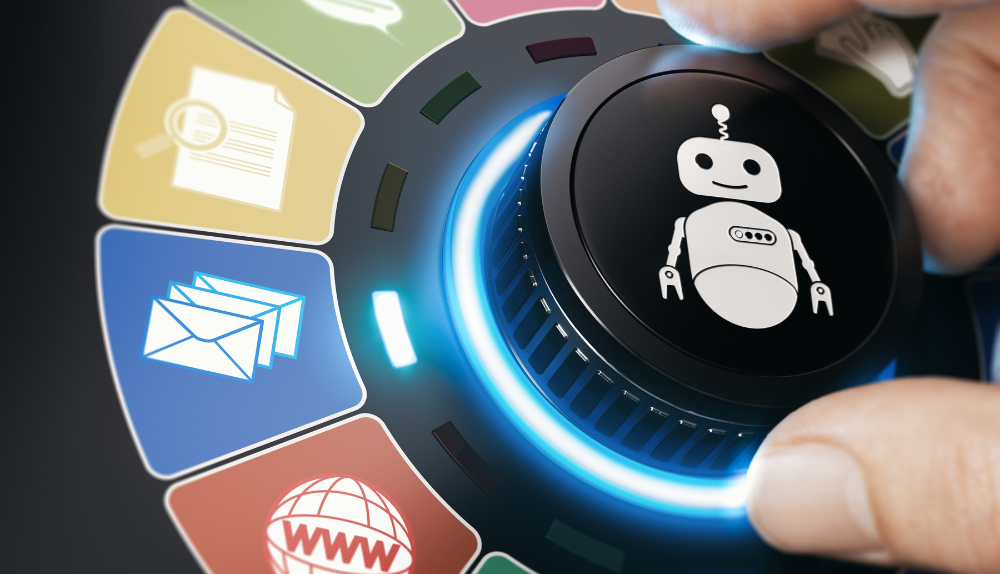In today’s fast-paced and technology-driven world, customer service has undergone a remarkable transformation. With the rise of artificial intelligence and automation, businesses are finding new and innovative ways to enhance their customer support operations. Enter the dynamic duo: bots and humans.
This powerful combination has revolutionized the customer service landscape, allowing companies to deliver exceptional experiences while maximizing efficiency. In this guide, we will delve into the art of using bots and humans harmoniously to win at customer service, unlocking the secrets to providing seamless assistance, personalized interactions, and unrivaled customer satisfaction. Get ready to discover the winning formula that will elevate your customer service game to new heights!
Role of Automation in Customer Service

In an era where technology is rapidly advancing, automation has emerged as a game-changer in the realm of customer service. By harnessing the power of artificial intelligence and machine learning, businesses can streamline their support processes, enhance response times, and provide round-the-clock assistance. In this section, we will explore the pivotal role of automation in revolutionizing customer service.
Benefits of Automation in Customer Service
Enhanced Efficiency
Automation eliminates manual, repetitive tasks, allowing customer service agents to focus on more complex and value-added activities. This leads to increased productivity, faster issue resolution, and optimized resource allocation.
24/7 Availability
With automated systems in place, businesses can offer customer support around the clock, transcending time zones and geographical boundaries. This ensures that customers receive timely assistance whenever they need it, enhancing their overall satisfaction.
Consistency and Accuracy
Automation ensures consistent and accurate responses to customer queries, eliminating the risk of human errors and inconsistencies. Standardized processes and predefined workflows enable businesses to maintain a high level of service quality across interactions.
Types of Automation in Customer Service
Chatbots
Chatbots are virtual assistants that use natural language processing to interact with customers. They can handle a wide range of inquiries, provide instant responses, and offer personalized recommendations, all while simulating human-like conversations.
Self-Service Tools
Self-service automation empowers customers to find answers to their questions independently through knowledge bases, FAQs, and interactive tutorials. By offering self-help options, businesses can reduce the volume of incoming inquiries and enable customers to resolve their issues efficiently.
Automated Routing and Escalation
Automation can intelligently route customer inquiries to the most appropriate support agents or departments based on predefined rules. This ensures that each inquiry reaches the right person, expediting the resolution process.
Automation has revolutionized customer service by enhancing efficiency, enabling 24/7 availability, and ensuring consistency. From chatbots to self-service tools and automated routing, businesses have a wide array of automation options at their disposal. However, it is crucial to remember that human interactions remain invaluable in certain scenarios. By leveraging the strengths of both automation and human agents, companies can create a customer service strategy that surpasses expectations, fosters meaningful connections, and ultimately wins customer loyalty.
Reasons to Choose Automation To Win At Customer Service
Automation plays a crucial role in customer service for several reasons:
Enhanced Efficiency
Automation eliminates manual, repetitive tasks, allowing customer service agents to focus on more complex and value-added activities. By automating routine processes such as data entry, ticket routing, or basic inquiries, businesses can significantly improve productivity, streamline operations, and allocate resources more effectively.
24/7 Availability
With automation, businesses can provide customer support round the clock. Automated systems, such as chatbots or self-service tools, can handle inquiries and provide assistance even outside of regular business hours. This ensures that customers can receive prompt responses and support whenever they need it, regardless of time zones or geographical location.
Consistency and Accuracy
Automation ensures consistent and accurate responses to customer queries. By using predefined workflows and standardized processes, businesses can deliver uniform information and solutions across all interactions. This reduces the risk of human errors, eliminates inconsistencies, and enhances the overall quality of service provided.
Scalability
As businesses grow and customer demands increase, automation allows for seamless scalability. Automated systems can handle a high volume of inquiries simultaneously without compromising the quality of service. This scalability ensures that businesses can cater to a growing customer base without experiencing bottlenecks or overwhelming their support teams.
Cost Savings
Automation can lead to significant cost savings for businesses. By automating repetitive tasks, companies can reduce the need for a large workforce, saving on labor costs. Additionally, automation can help minimize customer service errors, which can lead to financial losses or costly customer dissatisfaction.
Personalization and Insights
Automation can also enable personalized customer experiences. Through data analysis and machine learning algorithms, businesses can gather valuable insights about customer preferences, behaviors, and needs. These insights can be used to tailor interactions, provide personalized recommendations, and offer targeted solutions, ultimately enhancing customer satisfaction.
Overall, automation is important in customer service because it enhances efficiency, enables 24/7 availability, ensures consistency and accuracy, allows for scalability, offers cost savings, and facilitates personalization and insights. By leveraging automation effectively, businesses can deliver exceptional customer experiences, improve operational efficiency, and ultimately drive customer satisfaction and loyalty.
Types of Bots to Use in Customer Service

There are several types of bots that can be used in customer service to enhance the support experience. Here are some common types:
Chatbots
Chatbots are virtual assistants that can engage in conversations with customers through text or speech. They use natural language processing (NLP) to understand and respond to customer inquiries. Chatbots can provide instant responses to frequently asked questions, assist with basic troubleshooting, and even offer personalized recommendations based on customer preferences.
Voice Assistants
Voice assistants, such as Amazon’s Alexa, Google Assistant, or Apple’s Siri, are intelligent bots that use voice recognition and NLP to interact with customers. They can provide information, answer questions, and perform tasks through voice commands. Voice assistants are particularly useful for hands-free interactions, such as in-car systems or smart home devices.
Social Media Bots
Social media bots are designed to engage with customers on platforms like Facebook, Twitter, or Instagram. They can respond to direct messages, comments, or mentions, providing support, answering questions, and directing customers to relevant resources or human agents when needed. Social media bots help businesses manage large volumes of customer inquiries efficiently.
Support Ticket Bots
These bots are used to automate the handling of support tickets or email inquiries. They can categorize and prioritize tickets, gather necessary information from customers, and provide initial responses or automated updates. Support ticket bots help streamline the ticketing process, ensuring faster response times and efficient ticket management.
E-commerce Bots
E-commerce bots are specifically tailored for online shopping experiences. They can assist customers with product recommendations, track orders, provide shipping updates, and handle basic transactional tasks like processing returns or cancellations. E-commerce bots enhance the self-service capabilities of customers and contribute to a seamless shopping experience.
Workflow Automation Bots
Workflow automation bots are used to automate internal processes and tasks related to customer service. They can handle tasks like data entry, updating customer records, generating reports, or routing tickets to the appropriate agents. Workflow automation bots free up time for customer service agents, allowing them to focus on more complex issues and providing personalized support.
How to Create a Perfect Blend of Humans and Bots in Customer Service?

Creating a perfect blend of humans and bots in customer service involves careful planning, implementation, and continuous refinement. Here are some steps to achieve this balance:
Define the Scope
Clearly define the roles and responsibilities of both bots and human agents in customer service. Identify the specific tasks that can be effectively handled by bots and those that require human expertise and empathy. This will help you establish clear boundaries and expectations for each party.
Automate Routine Tasks
Identify repetitive and straightforward tasks that can be automated using bots. This includes handling basic inquiries, providing self-service options, routing tickets, or gathering initial information. By automating these tasks, you free up human agents to focus on more complex or emotionally sensitive interactions.
Implement Intelligent Routing
Develop a system for intelligent routing that directs customer inquiries to the appropriate channel or agent. Bots can handle initial triage and provide initial responses, but they should be capable of seamlessly transferring conversations to human agents when necessary. Ensure a smooth handover between bots and humans to maintain a cohesive customer experience.
Offer Seamless Transitions
When transitioning from bot interactions to human interactions, it is essential to provide context to human agents. Bots should capture relevant information from the conversation and transfer it to the human agent, enabling them to pick up where the bot left off. This avoids redundancy and ensures a seamless transition for the customer.
Empower Human Agents
Equip human agents with the necessary tools, knowledge, and training to effectively collaborate with bots. Provide them with access to chatbot logs, customer data, and automated workflows. This empowers human agents to intervene when required, resolve complex issues, and provide personalized support that goes beyond what bots can offer.
Continuous Improvement
Regularly monitor and analyze customer interactions, bot performance, and customer feedback to identify areas for improvement. Use customer feedback to refine and optimize bot responses, update knowledge bases, and enhance the training of human agents. Continuous improvement ensures that the blend of human and bot interactions evolves to meet customer needs effectively.
Foster Transparency
Be transparent with customers about the involvement of bots in the customer service process. Clearly communicate when customers are interacting with a bot and when a human agent takes over. This builds trust, sets appropriate expectations, and avoids any potential misunderstandings.
Monitor and Measure Success
Implement metrics and key performance indicators (KPIs) to assess the success of your human-bot blend. Measure factors like customer satisfaction, response time, resolution rate, and escalation rates. Regularly review these metrics to identify areas for optimization and ensure that the human-bot blend is delivering the desired outcomes.
Remember that the perfect blend of human and bot interactions may vary based on your specific industry, customer base, and the nature of inquiries you receive. Regularly assess and adapt your approach to meet the evolving needs of your customers and provide the best possible support experience.
Final Words
In conclusion, achieving the perfect blend of human and bot interactions in customer service is a dynamic and ongoing process. By leveraging the strengths of automation and human expertise, businesses can deliver exceptional support experiences that combine efficiency, personalization, and empathy.
Bots excel at handling routine tasks, providing instant responses, and enabling self-service options, while human agents bring a human touch, critical thinking, and emotional intelligence to more complex interactions. Striking the right balance requires careful planning, seamless transitions, continuous improvement, and transparency with customers. By creating this harmonious blend, businesses can elevate their customer service to new heights, surpassing customer expectations and building lasting relationships.
Frequently Asked Questions (FAQs)
What is the role of bots in customer service?
Bots play a crucial role in customer service by automating tasks, providing instant responses, and offering self-service options. They can handle basic inquiries, provide information, and assist with initial troubleshooting.
How do bots and humans work together in customer service?
Bots and humans work together in a collaborative manner. Bots handle routine tasks and inquiries, while human agents step in for more complex issues, emotional support, or personalized interactions. Bots can escalate conversations to human agents when necessary.
Can bots provide the same level of empathy as humans?
While bots can simulate empathy to a certain extent, human agents excel in understanding and empathizing with customers’ emotions. Human agents can provide a more personalized and emotionally supportive experience, especially in sensitive or complex situations.
How can businesses ensure a seamless transition between bots and human agents?
To ensure a smooth transition, bots should capture and transfer relevant information to human agents when handing off conversations. This includes providing context, customer history, and any actions taken by the bot. Clear communication is key to maintaining a cohesive customer experience.
How do businesses determine which inquiries should be handled by bots versus human agents?
Businesses can use predefined rules and criteria to determine which inquiries are best suited for bots and which require human intervention. Factors such as complexity, emotional sensitivity, and the need for personalized attention can guide this decision-making process.
Start Your Free Trial Today!
Find out how easy it is to improve your customer support and save time for FREE!